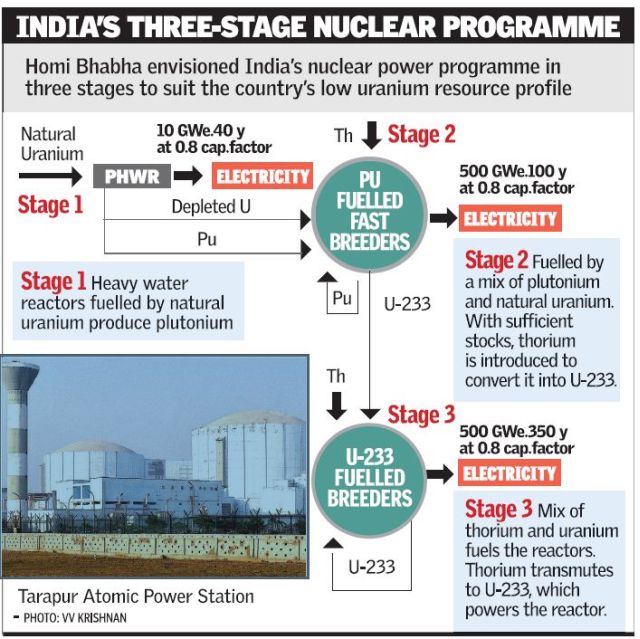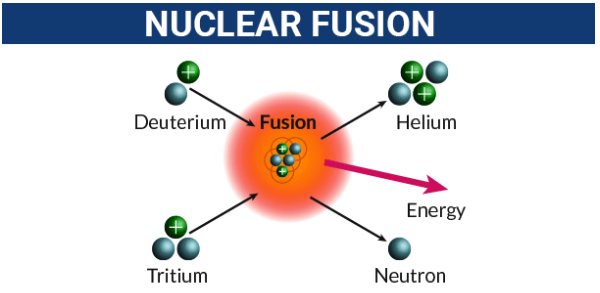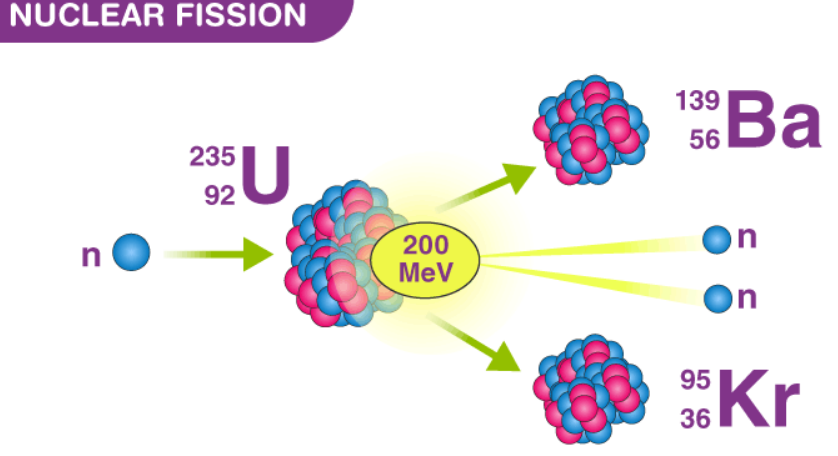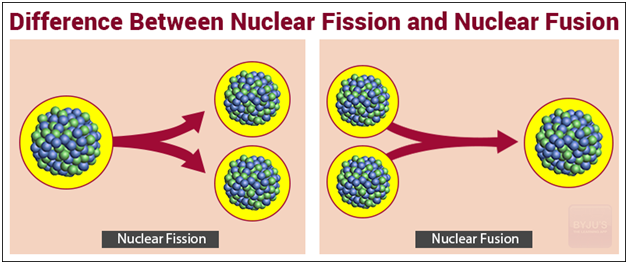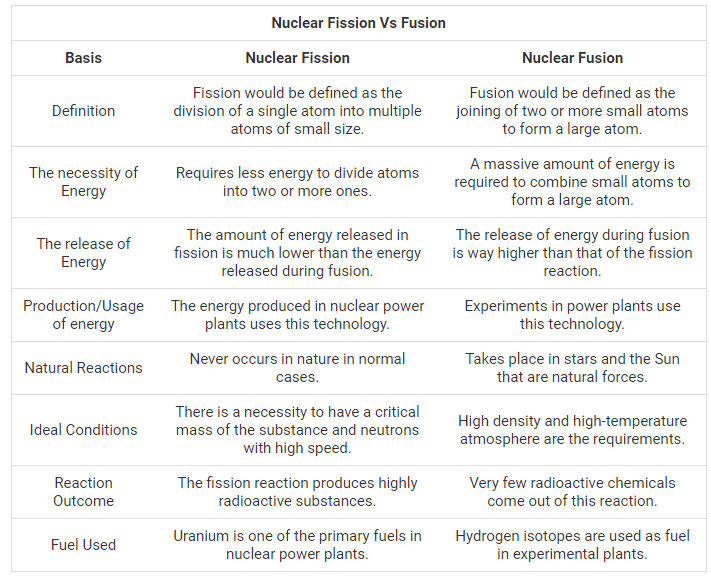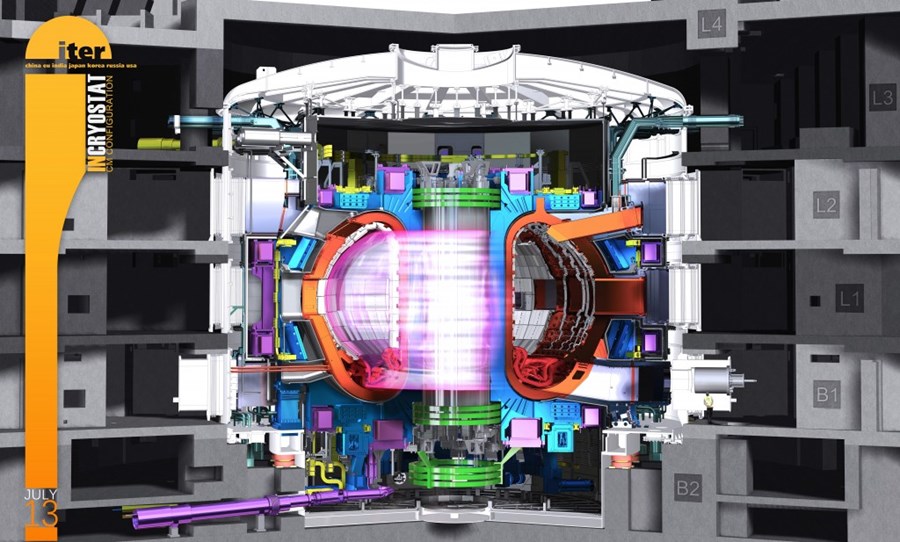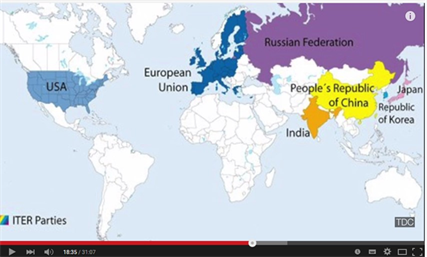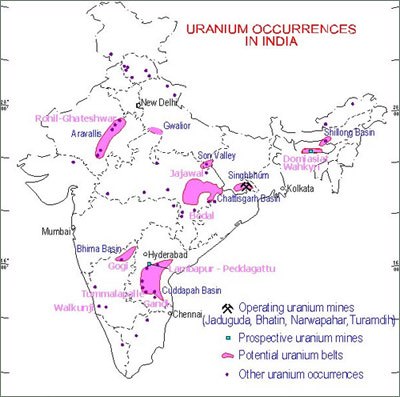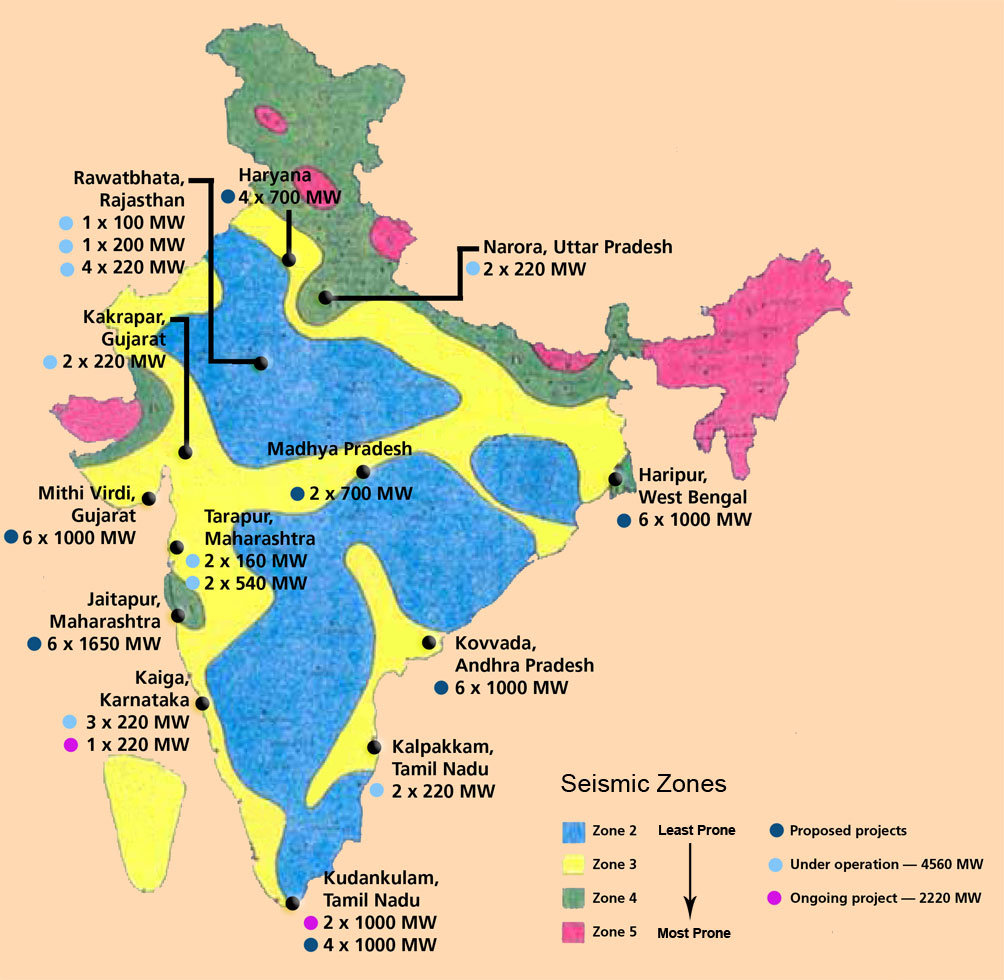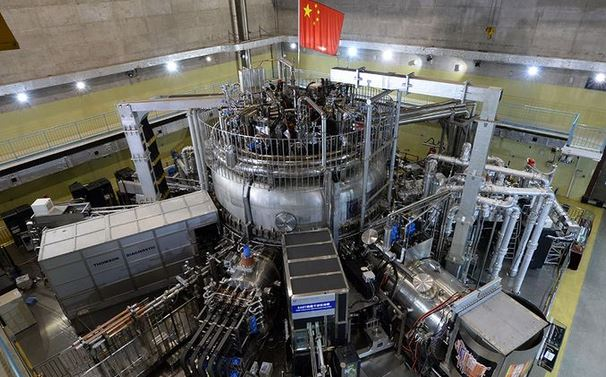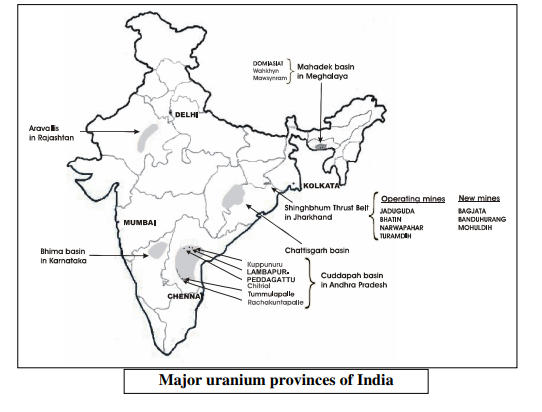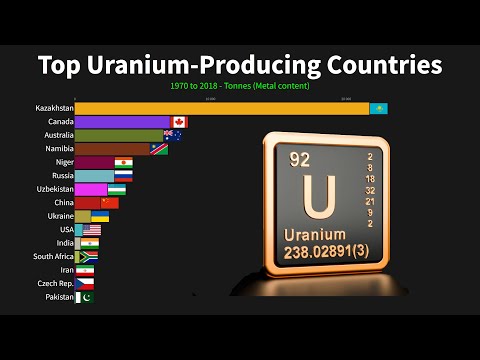The Dec 28th Static Quiz on Science and Technology (Nuclear Energy)
Quiz-summary
0 of 10 questions completed
Questions:
- 1
- 2
- 3
- 4
- 5
- 6
- 7
- 8
- 9
- 10
Information
The Dec 28th Static Quiz on Science and Technology (Nuclear Energy)
You have already completed the quiz before. Hence you can not start it again.
Quiz is loading...
You must sign in or sign up to start the quiz.
You have to finish following quiz, to start this quiz:
Results
0 of 10 questions answered correctly
Your time:
Time has elapsed
You have reached 0 of 0 points, (0)
Categories
- Not categorized 0%
- 1
- 2
- 3
- 4
- 5
- 6
- 7
- 8
- 9
- 10
- Answered
- Review
- Question 1 of 10
1. Question
Which of the folloing statements regarding Fissile and Fertile material are correctly matched?
1. Fertile material = a material is material capable of sustaining a nuclear fission chain reaction.
2. Fissile material = is a material that, although not itself fissionable by thermal neutrons, can be converted into a fissile material by neutron absorption and subsequent nuclei conversions.CorrectAns;- d) None of the above
Explanation;-
• Both the statements are reversed, that’s y answer is D.
• Fertile material is a material that, although not itself fissionable by thermal neutrons, can be converted into a fissile material by neutron absorption and subsequent nuclei conversions.
• In nuclear engineering, fissile material is material capable of sustaining a nuclear fission chain reaction. By definition, fissile material can sustain a chain reaction with neutrons of thermal energy. The predominant neutron energy may be typified by either slow neutrons or fast neutrons.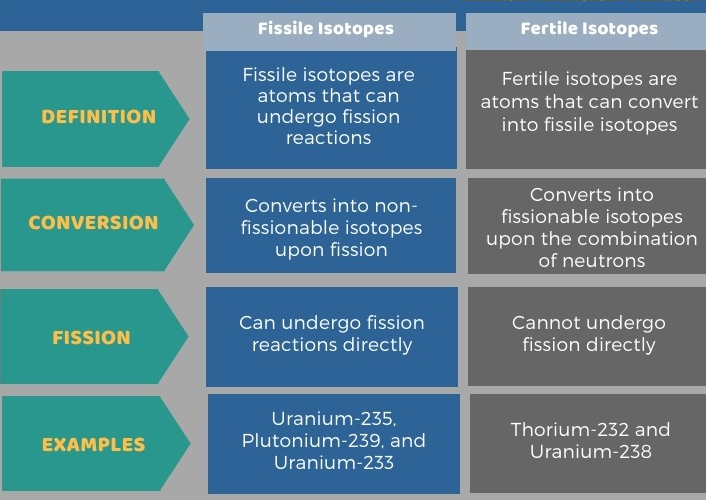 Incorrect
IncorrectAns;- d) None of the above
Explanation;-
• Both the statements are reversed, that’s y answer is D.
• Fertile material is a material that, although not itself fissionable by thermal neutrons, can be converted into a fissile material by neutron absorption and subsequent nuclei conversions.
• In nuclear engineering, fissile material is material capable of sustaining a nuclear fission chain reaction. By definition, fissile material can sustain a chain reaction with neutrons of thermal energy. The predominant neutron energy may be typified by either slow neutrons or fast neutrons.
- Question 2 of 10
2. Question
Which of the folloing statements regarding India’s nuclear energy programme are correct?
1. The Indian nuclear programme is a 2 stage programme
2. It was formulated by Dr. Homi Bhabha in the 1950s to secure the country’s long term energy independence.CorrectAns;- b) Only 2
Explanation;-
• The statement 1st is incorrect because India envisages A Three Stage Programme based on the optimum utilization of the indigenous limited uranium and abundant thorium resources, not 2 stage.
• It was formulated by Dr. Homi Bhabha in the 1950s to secure the country’s long term energy independence. Incorrect
IncorrectAns;- b) Only 2
Explanation;-
• The statement 1st is incorrect because India envisages A Three Stage Programme based on the optimum utilization of the indigenous limited uranium and abundant thorium resources, not 2 stage.
• It was formulated by Dr. Homi Bhabha in the 1950s to secure the country’s long term energy independence.
- Question 3 of 10
3. Question
Which of the following statements are correctly matched?
1. Nuclear Fusion = is a process in nuclear physics in which the nucleus of an atom splits into two or more smaller nuclei as fission products, and usually some by-product particles.
2. Nuclear Fission = is the process of making a single heavy nucleus (part of an atom) from two lighter nuclei.CorrectAns;- d) None of the above
Explanation;-
• Both the statements are reversed.
• Nuclear Fusion a nuclear reaction in which atomic nuclei of low atomic number fuse to form a heavier nucleus with the release of energy.
• In nuclear physics and nuclear chemistry, nuclear fission is a nuclear reaction or a radioactive decay process in which the nucleus of an atom splits into two or more smaller, lighter nuclei.
 Incorrect
IncorrectAns;- d) None of the above
Explanation;-
• Both the statements are reversed.
• Nuclear Fusion a nuclear reaction in which atomic nuclei of low atomic number fuse to form a heavier nucleus with the release of energy.
• In nuclear physics and nuclear chemistry, nuclear fission is a nuclear reaction or a radioactive decay process in which the nucleus of an atom splits into two or more smaller, lighter nuclei.

- Question 4 of 10
4. Question
Which of the folloing staements regaridng Nuclear Fission and Fusion are correct?
1. The amount of energy released in fission is much lower than the energy released during fusion.
2. The fission reaction produces highly radioactive substances.CorrectAns;- c) Both 1 and 2
Explanation;-
• Both the statements are correct.

• The difference between Nuclear Fusion and Fission as shown in the below attached image
 Incorrect
IncorrectAns;- c) Both 1 and 2
Explanation;-
• Both the statements are correct.

• The difference between Nuclear Fusion and Fission as shown in the below attached image

- Question 5 of 10
5. Question
Which of the following regarding International Thermonuclear Experimental Reactor (ITER) are incorrect?
1. The International Thermonuclear Experimental Reactor (ITER) is a collaboration of 35 nations launched in 2001.
2. It is located in Spain
3. The India is not a member of it.CorrectAns;- d) All of the above
Explanation;-
• All the statements about ITER are incorrect that’s y answer is D.
About International Thermonuclear Experimental Reactor (ITER)
• The International Thermonuclear Experimental Reactor (ITER) is a collaboration of 35 nations launched in 1985.
• It is located in France.
• It aims to build the world’s largest tokamak to prove the feasibility of fusion as a large-scale and carbon-free source of energy.
• The tokamak is an experimental machine designed to harness the energy of fusion. Inside a tokamak, the energy produced through the fusion of atoms is absorbed as heat in the walls of the vessel.
• Like a conventional power plant, a fusion power plant uses this heat to produce steam and then electricity by way of turbines and generators.
• The project is based on fusion which is also an energy source for the Sun and stars.
• Every fusion reaction in the Sun, in which two hydrogen atoms fuse into one helium atom, releases two neutrinos.
• ITER will be the first fusion device to maintain fusion for long periods of time and also to test the integrated technologies, materials, and physics regimes necessary for the commercial production of fusion-based electricity.
• The ITER members include China, the European Union, India, Japan, South Korea, Russia and the United States.
• According to the ITER Agreement (2006), the above mentioned seven members will share the cost of project construction, operation and decommissioning.
• They also share the experimental results and any intellectual property generated by the fabrication, construction and operation phases.IncorrectAns;- d) All of the above
Explanation;-
• All the statements about ITER are incorrect that’s y answer is D.
About International Thermonuclear Experimental Reactor (ITER)
• The International Thermonuclear Experimental Reactor (ITER) is a collaboration of 35 nations launched in 1985.
• It is located in France.
• It aims to build the world’s largest tokamak to prove the feasibility of fusion as a large-scale and carbon-free source of energy.
• The tokamak is an experimental machine designed to harness the energy of fusion. Inside a tokamak, the energy produced through the fusion of atoms is absorbed as heat in the walls of the vessel.
• Like a conventional power plant, a fusion power plant uses this heat to produce steam and then electricity by way of turbines and generators.
• The project is based on fusion which is also an energy source for the Sun and stars.
• Every fusion reaction in the Sun, in which two hydrogen atoms fuse into one helium atom, releases two neutrinos.
• ITER will be the first fusion device to maintain fusion for long periods of time and also to test the integrated technologies, materials, and physics regimes necessary for the commercial production of fusion-based electricity.
• The ITER members include China, the European Union, India, Japan, South Korea, Russia and the United States.
• According to the ITER Agreement (2006), the above mentioned seven members will share the cost of project construction, operation and decommissioning.
• They also share the experimental results and any intellectual property generated by the fabrication, construction and operation phases. - Question 6 of 10
6. Question
Which of the following statements regarding Uranium are correct?
1. All uranium isotopes are radioactive and fissionable.
2. But only 235U is fissile (will support a neutron-mediated chain reaction).CorrectAns;- c) Both 1 and 2
Explanation;-
• Both the statements regaridng Uranium are correct.
• Uranium is a silvery-gray metallic radioactive chemical element. It is only naturally formed in supernova explosions.
• Uranium, thorium, and potassium are the main elements contributing to natural terrestrial radioactivity.
• Uranium has the chemical symbol U and atomic number 92.
• Uranium isotopes in natural uranium are 238U (99.27%) and 235U (0.72%).
• All uranium isotopes are radioactive and fissionable. But only 235U is fissile (will support a neutron-mediated chain reaction).
• Traces of Uranium are found everywhere.
• Commercial extraction is possible only in locations where the proportion of Uranium is adequate. There are very few such locations. Incorrect
IncorrectAns;- c) Both 1 and 2
Explanation;-
• Both the statements regaridng Uranium are correct.
• Uranium is a silvery-gray metallic radioactive chemical element. It is only naturally formed in supernova explosions.
• Uranium, thorium, and potassium are the main elements contributing to natural terrestrial radioactivity.
• Uranium has the chemical symbol U and atomic number 92.
• Uranium isotopes in natural uranium are 238U (99.27%) and 235U (0.72%).
• All uranium isotopes are radioactive and fissionable. But only 235U is fissile (will support a neutron-mediated chain reaction).
• Traces of Uranium are found everywhere.
• Commercial extraction is possible only in locations where the proportion of Uranium is adequate. There are very few such locations.
- Question 7 of 10
7. Question
Which of the folloing nuclear power plants and respective state are matched correctly?
1. Mithi Virdi = Gujarat
2. Haripur = West Bengal
3. Kovvada = Andhra PradeshCorrectAns;- d) All of the above
Explanation;-
• All the nuclear power plants are matched correctly.
• A nuclear power plant is a thermal power station in which the heat source is a nuclear reactor.
• As is typical of thermal power stations, heat is used to generate steam that drives a steam turbine connected to a generator that produces electricity. Incorrect
IncorrectAns;- d) All of the above
Explanation;-
• All the nuclear power plants are matched correctly.
• A nuclear power plant is a thermal power station in which the heat source is a nuclear reactor.
• As is typical of thermal power stations, heat is used to generate steam that drives a steam turbine connected to a generator that produces electricity.
- Question 8 of 10
8. Question
Recently seen “HL-2M Tokamak” is related to which of the following ?
CorrectAns;- a) reactor is China’s largest and most advanced nuclear fusion experimental research device.
Explanation;-
• The HL-2M Tokamak reactor is China’s largest and most advanced nuclear fusion experimental research device.
• Name of the mission: Experimental Advanced Superconducting Tokamak (EAST).
• Its Location Sichuan province.
• The reactor is often called an “artificial sun” due to the enormous heat and power it produces.
• It uses a powerful magnetic field to fuse hot plasma and can reach temperatures of over 150 million degrees Celsius which is approximately ten times hotter than the core of the sun.
• Scientists hope that the device can potentially unlock a powerful clean energy source.
• Nuclear forces are small-distance forces and have to act against the electrostatic forces where positively charged nuclei repel each other.
• This is the reason nuclear fusion reactions occur mostly in high density, high-temperature environment which is practically very difficult to achieve under laboratory conditions. Incorrect
IncorrectAns;- a) reactor is China’s largest and most advanced nuclear fusion experimental research device.
Explanation;-
• The HL-2M Tokamak reactor is China’s largest and most advanced nuclear fusion experimental research device.
• Name of the mission: Experimental Advanced Superconducting Tokamak (EAST).
• Its Location Sichuan province.
• The reactor is often called an “artificial sun” due to the enormous heat and power it produces.
• It uses a powerful magnetic field to fuse hot plasma and can reach temperatures of over 150 million degrees Celsius which is approximately ten times hotter than the core of the sun.
• Scientists hope that the device can potentially unlock a powerful clean energy source.
• Nuclear forces are small-distance forces and have to act against the electrostatic forces where positively charged nuclei repel each other.
• This is the reason nuclear fusion reactions occur mostly in high density, high-temperature environment which is practically very difficult to achieve under laboratory conditions.
- Question 9 of 10
9. Question
Which of the folloing nuclear mines in india and respective state are matched correctly?
1. Tummalapalle Mine = Andhra Pradesh
2. Jaduguda uranium mine = Jharkhand
3. Bhima Basin = KarnatakaCorrectAns;- d) All of the above
Explanation;-
• All the uranium mines and respective states are correctly matched.
• The deposits at this mine were discovered in 1951. As of March 2012, India only possesses two functional uranium mines, including this Jaduguda Mine. A new mine, Tummalapalle uranium mine is discovered and mining is going to start from it.
• The Tummalapalle Mine is a uranium mine in Tumalapalli village located in Kadapa of the Indian state of Andhra Pradesh. Results from research conducted by the Atomic Energy Commission of India in 2011 made the analysts conclude that this mine might have one of the largest reserves of uranium in the world.
• The Jaduguda Mine is a uranium mine in Jaduguda village in the Purbi Singhbhum district of the Indian state of Jharkhand. It commenced operation in 1967 and was the first uranium mine in India. The deposits at this mine were discovered in 1951. Incorrect
IncorrectAns;- d) All of the above
Explanation;-
• All the uranium mines and respective states are correctly matched.
• The deposits at this mine were discovered in 1951. As of March 2012, India only possesses two functional uranium mines, including this Jaduguda Mine. A new mine, Tummalapalle uranium mine is discovered and mining is going to start from it.
• The Tummalapalle Mine is a uranium mine in Tumalapalli village located in Kadapa of the Indian state of Andhra Pradesh. Results from research conducted by the Atomic Energy Commission of India in 2011 made the analysts conclude that this mine might have one of the largest reserves of uranium in the world.
• The Jaduguda Mine is a uranium mine in Jaduguda village in the Purbi Singhbhum district of the Indian state of Jharkhand. It commenced operation in 1967 and was the first uranium mine in India. The deposits at this mine were discovered in 1951.
- Question 10 of 10
10. Question
Which of the following are correct?
1. Canada has the largest reserves of Uranium in the world
2. Canada was the world’s second largest uranium-producing country in 2019
3. Uranium is extracted in the form of yellow cake.CorrectAns;- b) 2 and 3 only
Explanation;-
• Except 1st statement all are correct, Kazakhstan is largest reserve of uranium in world not Canada.
• Kazakhstan had uranium reserves amounting to approximately 304 thousand metric tons, making it the country with the largest uranium reserves in the world, not Canada.
• Yellowcake is traditionally stored as a powder. Yellowcake uranium the powdered typically yellow form of uranium oxide with the chemical formula U3O8. In the nuclear fuel cycle, yellowcake is a product of the second step, occurring directly after mining and is created through milling.
• The Tummalapalle Mine is a uranium mine in Tumalapalli village located in Kadapa of the Indian state of Andhra Pradesh.
• Results from research conducted by the Atomic Energy Commission of India in 2011 made the analysts conclude that this mine might have one of the largest reserves of uranium in the world.IncorrectAns;- b) 2 and 3 only
Explanation;-
• Except 1st statement all are correct, Kazakhstan is largest reserve of uranium in world not Canada.
• Kazakhstan had uranium reserves amounting to approximately 304 thousand metric tons, making it the country with the largest uranium reserves in the world, not Canada.
• Yellowcake is traditionally stored as a powder. Yellowcake uranium the powdered typically yellow form of uranium oxide with the chemical formula U3O8. In the nuclear fuel cycle, yellowcake is a product of the second step, occurring directly after mining and is created through milling.
• The Tummalapalle Mine is a uranium mine in Tumalapalli village located in Kadapa of the Indian state of Andhra Pradesh.
• Results from research conducted by the Atomic Energy Commission of India in 2011 made the analysts conclude that this mine might have one of the largest reserves of uranium in the world.

